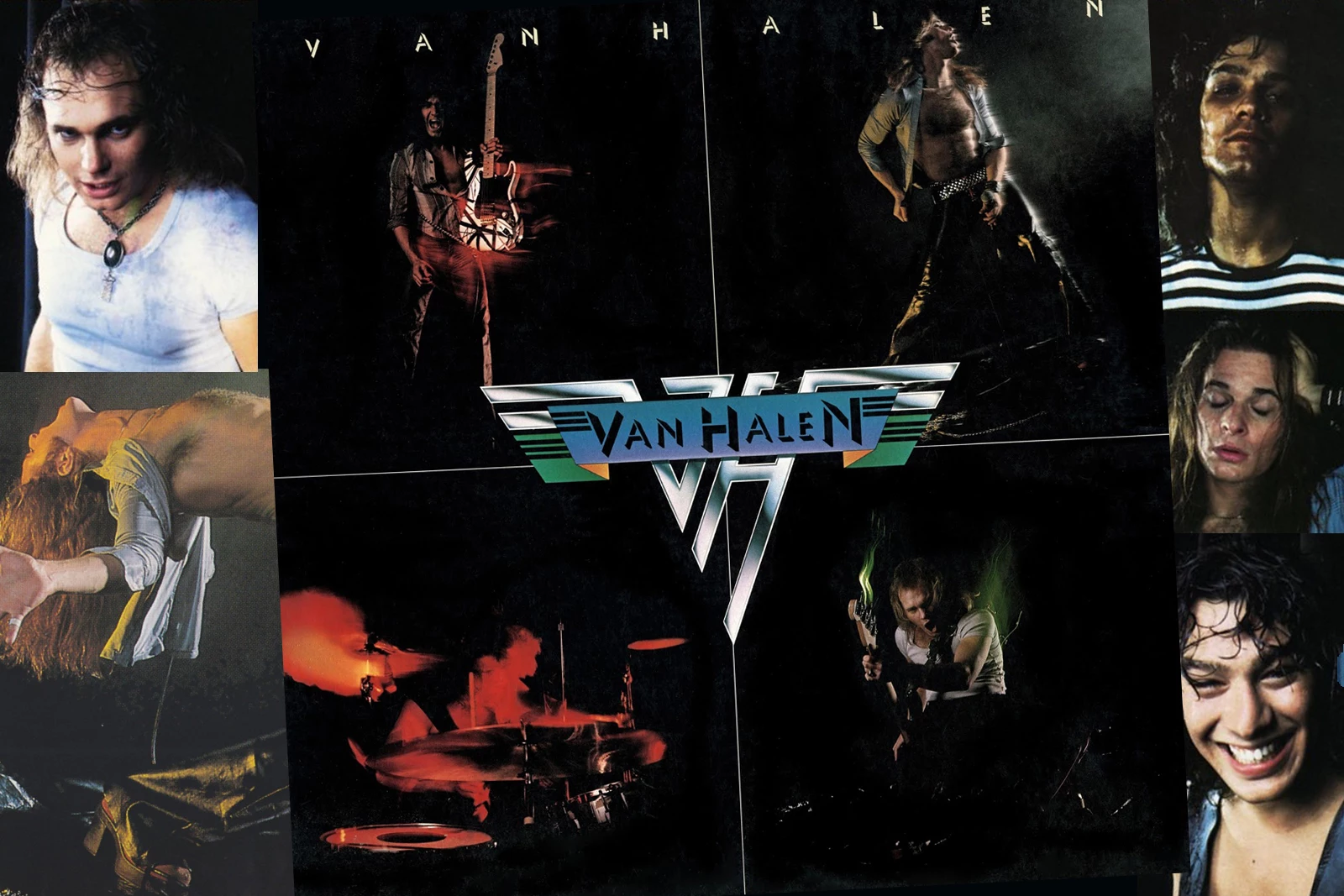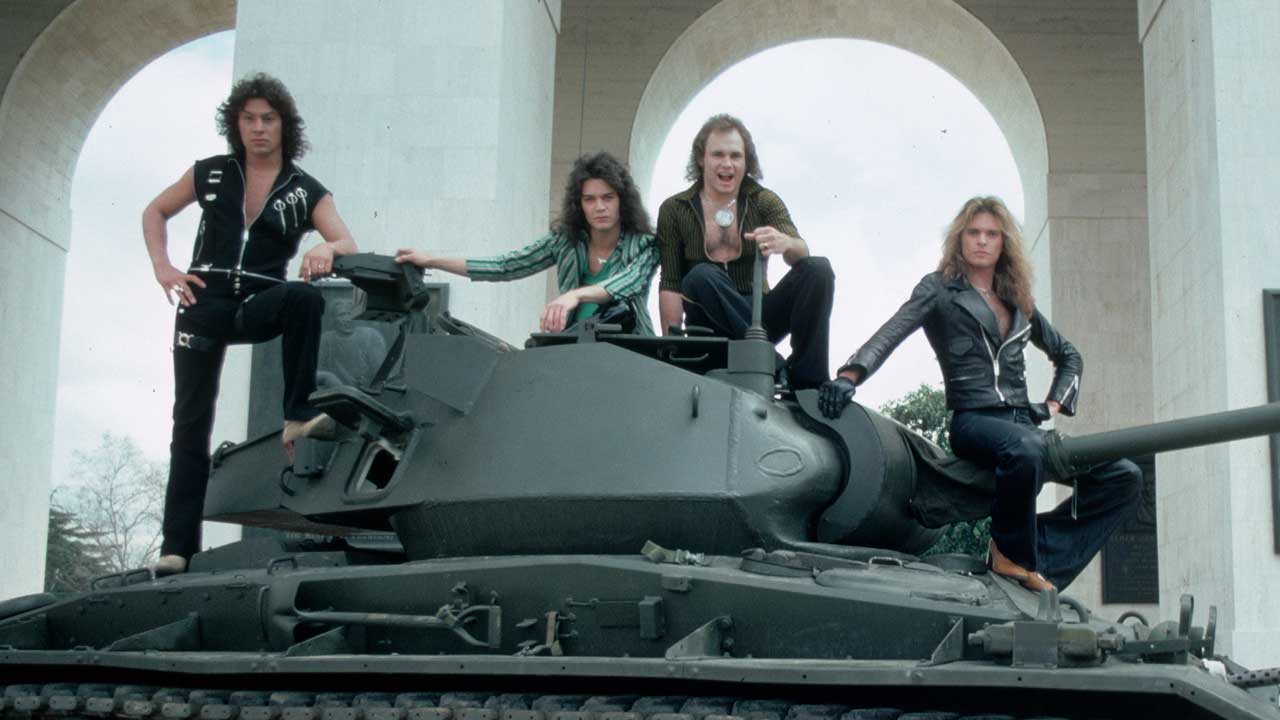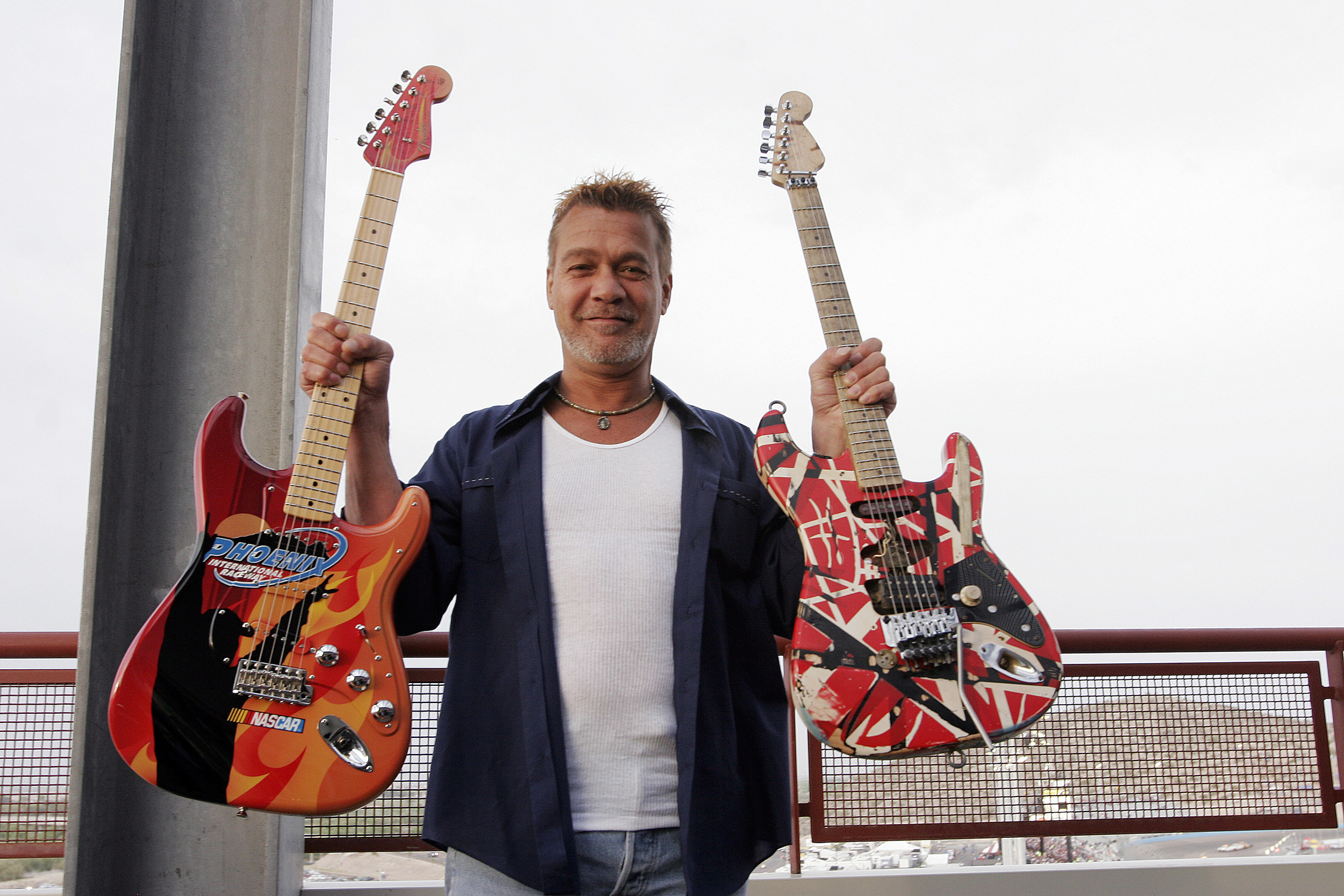Van Halen’s Musical Legacy

Van Halen, the iconic American hard rock band, left an indelible mark on the musical landscape, influencing generations of musicians and shaping the sound of rock music for decades. Their innovative approach to guitar playing, coupled with their high-energy live performances and David Lee Roth’s charismatic stage presence, propelled them to legendary status.
Evolution Through Musical Eras
Van Halen’s musical journey spanned over three decades, marked by distinct eras defined by different vocalists and musical styles. Their early albums, including their self-titled debut (1978) and *Women and Children First* (1980), showcased their signature blend of hard rock, blues, and heavy metal, characterized by Eddie Van Halen’s innovative guitar techniques and Roth’s flamboyant stage persona. This period established them as a force to be reckoned with in the rock world.
The arrival of Sammy Hagar in 1985 ushered in a new era for Van Halen, marked by a more melodic and commercially accessible sound. Albums like *5150* (1986) and *OU812* (1988) showcased a heavier focus on power ballads and pop-influenced rock, capturing a wider audience and achieving significant commercial success.
The band’s later albums, featuring Gary Cherone and David Lee Roth’s return, explored different musical directions, incorporating elements of funk, pop, and alternative rock. While these albums were commercially successful, they did not achieve the same critical acclaim as their earlier works.
Comparison with Other Prominent Rock Bands
Van Halen’s sound was distinct from other prominent rock bands of their era, such as Led Zeppelin, Aerosmith, and AC/DC. While they shared a common foundation in hard rock and blues, Van Halen’s music was characterized by Eddie Van Halen’s innovative guitar techniques, David Lee Roth’s unique vocal style, and the band’s energetic live performances.
“Eddie Van Halen was a revolutionary guitar player, pushing the boundaries of what was possible with the instrument. His innovative techniques, such as tapping and two-handed tapping, influenced a generation of guitarists.” – Guitar World Magazine
Signature Elements of Van Halen’s Musical Style
Van Halen’s musical style was defined by several signature elements, each contributing to their unique sound:
- Eddie Van Halen’s Guitar Techniques: Eddie Van Halen revolutionized rock guitar playing with his innovative techniques, such as tapping, two-handed tapping, and dive bombs. His solos were characterized by their speed, complexity, and melodic beauty. He also incorporated elements of blues, jazz, and classical music into his playing, creating a unique and instantly recognizable sound.
- David Lee Roth’s Vocal Style: David Lee Roth’s vocal style was as distinctive as Eddie Van Halen’s guitar playing. His powerful, raspy voice, coupled with his charismatic stage presence and playful lyrics, made him one of the most iconic rock singers of the 1970s and 1980s.
- Energetic Live Performances: Van Halen’s live performances were legendary, known for their high energy, impressive musicianship, and Roth’s theatrical antics. The band’s ability to connect with their audiences and create an unforgettable live experience cemented their status as one of the greatest live rock bands of all time.
Influence on Subsequent Generations of Musicians
Van Halen’s influence on subsequent generations of musicians is undeniable. Eddie Van Halen’s guitar techniques inspired countless guitarists, including Steve Vai, Joe Satriani, and Yngwie Malmsteen. David Lee Roth’s vocal style and stage presence influenced countless singers, while the band’s energetic live performances set a standard for rock concerts for decades to come.
The Rise and Fall of Van Halen

From their humble beginnings in Pasadena, California, to their iconic status in the rock and roll pantheon, Van Halen’s journey was a whirlwind of musical brilliance, personal drama, and ultimately, a bittersweet legacy. Their rise to fame was meteoric, fueled by their innovative guitar work, Eddie Van Halen’s groundbreaking techniques, and David Lee Roth’s charismatic stage presence. However, internal conflicts and the inevitable ebb and flow of creative partnerships eventually led to the band’s decline and eventual disbandment.
Early Years and Breakthrough
Van Halen’s origins can be traced back to 1972, when brothers Eddie and Alex Van Halen, along with David Lee Roth and Michael Anthony, formed a band in Pasadena, California. Their early years were marked by relentless gigging in local clubs, honing their musical skills and developing a unique sound that blended hard rock, heavy metal, and pop influences. Their raw energy and innovative guitar work quickly gained them a loyal following in the Southern California rock scene. Their breakthrough came in 1978 with the release of their self-titled debut album. The album was a commercial success, propelled by the singles “Runnin’ with the Devil” and “Eruption,” which showcased Eddie Van Halen’s virtuosic guitar skills.
Lineup Changes and the Arrival of Sammy Hagar
The band’s success continued throughout the 1980s, with albums like “Women and Children First” (1980), “Fair Warning” (1981), and “1984” (1984) solidifying their status as one of the most popular and influential rock bands of the decade. However, creative differences and personal tensions began to surface, particularly between David Lee Roth and the Van Halen brothers. Roth’s flamboyant personality and desire for solo ventures clashed with the band’s more grounded approach, ultimately leading to his departure in 1985.
Following Roth’s exit, Van Halen recruited Sammy Hagar, a seasoned rock vocalist known for his work with Montrose. Hagar brought a different dynamic to the band, his powerful vocals and blues-infused style injecting a new energy into their sound. The band’s first album with Hagar, “5150” (1986), was a massive commercial success, spawning hits like “Why Can’t This Be Love” and “Dreams.”
Decline and Disbandment
Despite the initial success with Hagar, the band’s popularity began to wane in the late 1980s and early 1990s. The release of “OU812” (1988) and “For Unlawful Carnal Knowledge” (1991) failed to achieve the same commercial success as their earlier albums, and the band’s internal conflicts continued to simmer.
Hagar’s departure in 1996 marked a significant turning point for Van Halen. The band experimented with various vocalists, including Gary Cherone and the return of David Lee Roth, but none could recapture the magic of their earlier years. Eddie Van Halen’s health issues, including a battle with throat cancer, also took a toll on the band’s productivity.
Internal Conflicts and Personal Struggles
Throughout their history, Van Halen was plagued by internal conflicts and personal struggles. The band’s creative dynamic was often volatile, with differing musical visions and personalities clashing. Eddie Van Halen’s perfectionism and demanding nature often strained relationships within the band. David Lee Roth’s ego and desire for solo stardom created friction with the Van Halen brothers, leading to his eventual departure. Sammy Hagar’s outspoken nature and desire for creative control also contributed to tensions within the band.
In addition to creative differences, personal struggles played a significant role in the band’s decline. Eddie Van Halen’s health issues, including his battle with throat cancer, took a toll on his ability to perform and write music. The band’s members also faced personal challenges, including substance abuse and marital problems, which impacted their ability to function as a cohesive unit.
Eddie Van Halen: A Guitar Legend
Eddie Van Halen was more than just a guitarist; he was a revolutionary force who redefined the possibilities of the instrument. His innovative techniques and unparalleled mastery of the fretboard transformed the rock music landscape, leaving an indelible mark on generations of guitarists.
Eddie Van Halen’s Innovative Guitar Techniques
Eddie Van Halen’s guitar playing was characterized by a unique blend of speed, precision, and sheer musicality. He pushed the boundaries of traditional guitar techniques, developing his own signature style that combined elements of classical, jazz, and rock music.
Tapping
Eddie Van Halen’s signature tapping technique, where he used his right hand to tap on the fretboard while simultaneously picking with his left hand, revolutionized guitar playing. This technique allowed him to create complex and melodic lines that were impossible to achieve with traditional picking methods. The most famous example of his tapping technique is the iconic solo in the Van Halen song “Eruption,” which showcased his mastery of this innovative approach.
Dive Bombs
Another distinctive feature of Eddie Van Halen’s style was his use of dive bombs, a technique that involved quickly depressing the tremolo bar on his guitar to create a dramatic and descending sound. This technique added a dynamic and theatrical element to his playing, often used to transition between sections or create a sense of tension and release.
Harmonic Techniques
Eddie Van Halen was also a master of harmonic techniques, using his knowledge of the guitar’s natural harmonics to create soaring and ethereal sounds. He incorporated these techniques into his solos, adding a layer of complexity and beauty to his playing. His use of harmonics, combined with his tapping and dive bombing, created a signature sound that was both powerful and melodic.
Eddie Van Halen’s Iconic Guitars and Equipment
Eddie Van Halen’s choice of guitars and equipment played a crucial role in shaping his unique sound. He was known for his preference for Fender Stratocasters, which he heavily modified to suit his playing style.
The “Frankenstrat”
Eddie Van Halen’s most famous guitar, the “Frankenstrat,” was a custom-built instrument that combined the body of a Fender Stratocaster with a humbucker pickup from a Gibson. He also added a tremolo bar, a Kahler tremolo system, and a custom-designed pickguard. The Frankenstrat’s unique combination of features and Eddie Van Halen’s modifications gave it a powerful and versatile sound that became synonymous with his playing style.
Other Guitars and Equipment
In addition to the Frankenstrat, Eddie Van Halen also played a variety of other guitars, including Gibson Les Pauls, Ibanez guitars, and even a custom-made guitar by the luthier, John Suhr. He was known for his use of high-gain amplifiers, such as Marshall amps and Peavey 5150s, which helped him achieve his signature heavy and distorted sound.
Eddie Van Halen’s Influence on Other Guitarists
Eddie Van Halen’s innovative techniques and musical style had a profound impact on the guitar world. He inspired countless guitarists, including Steve Vai, Joe Satriani, and Yngwie Malmsteen, who adopted his techniques and pushed the boundaries of guitar playing even further. His influence can be heard in the music of countless rock, metal, and pop artists, and his legacy continues to inspire guitarists today.
Eddie Van Halen’s Career Timeline
Eddie Van Halen’s career spanned over four decades, during which he achieved numerous milestones and accolades.
- 1972: Eddie Van Halen and his brother, Alex, formed the band Van Halen.
- 1978: Van Halen released their self-titled debut album, which featured the hit single “Runnin’ with the Devil.”
- 1984: Van Halen released the album “1984,” which featured the hit singles “Jump” and “Panama.”
- 1985: Eddie Van Halen made a guest appearance on Michael Jackson’s album “Thriller,” playing the iconic guitar solo on the song “Beat It.”
- 2007: Eddie Van Halen was inducted into the Rock and Roll Hall of Fame.
- 2020: Eddie Van Halen passed away on October 6, 2020, at the age of 65.
Van Halen, the iconic rock band known for their energetic live shows and Eddie Van Halen’s guitar virtuosity, have a lot in common with the comedic style of owen smith comedian. Both are masters of their craft, captivating audiences with their unique blend of talent and showmanship.
Just like Van Halen’s music, Owen Smith’s comedy is full of energy and surprises, leaving you wanting more.
Van Halen, the legendary rock band, exploded onto the scene in the late 70s, known for their blistering guitar riffs and Eddie Van Halen’s innovative playing. The band’s success was inextricably linked to the flamboyant and energetic presence of their frontman, David Lee Roth , whose wild stage antics and powerful vocals were a defining part of their sound.
After Roth’s departure, the band continued to release music, but the energy and charisma of their early days were never quite replicated.

